Portal:Philosophy
- አማርኛ
- العربية
- Avañe'ẽ
- Azərbaycanca
- تۆرکجه
- বাংলা
- Bân-lâm-gú
- Башҡортса
- Беларуская (тарашкевіца)
- Български
- Brezhoneg
- Català
- Cebuano
- Čeština
- الدارجة
- Deutsch
- ދިވެހިބަސް
- Eesti
- Español
- فارسی
- Français
- 한국어
- हिन्दी
- Bahasa Indonesia
- Íslenska
- Italiano
- עברית
- Kapampangan
- Lëtzebuergesch
- Lietuvių
- Magyar
- Македонски
- Bahasa Melayu
- Nederlands
- 日本語
- Нохчийн
- پښتو
- Polski
- Português
- Română
- Русский
- Shqip
- සිංහල
- سنڌي
- کوردی
- Српски / srpski
- Suomi
- Svenska
- தமிழ்
- Taclḥit
- Татарча / tatarça
- ไทย
- Тоҷикӣ
- Türkçe
- Українська
- اردو
- Tiếng Việt
- 文言
- 粵語
- Zazaki
- 中文
Portal maintenance status: (June 2018)
automated editing software. Learn how to update the maintenance information here . |
The Philosophy Portal Philosophy (φιλοσοφία, 'love of wisdom', in Ancient Greek) is a systematic study of general and fundamental questions concerning topics like existence, reason, knowledge, value, mind, and language. It is a rational and critical inquiry that reflects on its own methods and assumptions. Historically, many of the individual sciences, such as physics and psychology, formed part of philosophy. However, they are considered separate academic disciplines in the modern sense of the term. Influential traditions in the history of philosophy include Western, Arabic–Persian, Indian, and Chinese philosophy. Western philosophy originated in Ancient Greece and covers a wide area of philosophical subfields. A central topic in Arabic–Persian philosophy is the relation between reason and revelation. Indian philosophy combines the spiritual problem of how to reach enlightenment with the exploration of the nature of reality and the ways of arriving at knowledge. Chinese philosophy focuses principally on practical issues in relation to right social conduct, government, and self-cultivation. Major branches of philosophy are schools of philosophy that promote different principles, theories, or methods.
Philosophers use a great variety of methods to arrive at philosophical knowledge. They include interdisciplinary perspective and studies the scope and fundamental concepts of these fields. It also investigates their methods and ethical implications. (Full article... )
|
Selected article of the week

Ludwig Josef Johann Wittgenstein (26 April 1889 – 29 April 1951) was an
Described by his mentor and colleague Bertrand Russell as "the most perfect example I have ever known of genius as traditionally conceived, passionate, profound, intense, and dominating," Wittgenstein is considered by many to be the greatest philosopher of the 20th century. Instrumental in inspiring two of the century's principal philosophical movements, logical positivism and ordinary language philosophy, he is considered one of the most important figures in analytic philosophy. According to an end of the century poll, professional philosophers rank both his Tractatus Logico-Philosophicus (1921) and Philosophical Investigations (1953) among the top five most important books in twentieth-century philosophy, the latter standing out as "the one crossover masterpiece in twentieth-century philosophy, appealing across diverse specializations and philosophical orientations." Wittgenstein's influence has been felt in nearly every field of the humanities and social sciences, yet there are widely diverging interpretations of his thought.
 Good articles - load new batch
Good articles - load new batch
-
Image 1"In Praise of Polytheism (On Monomythical and Polymythical Thinking)" (German: Lob des Polytheismus. Über Monomythie und Polymythie) is an essay by the German philosopher Odo Marquard, which was held as a lecture at the Technical University of Berlin in 1978. It was first published in 1979 in an anthology, and was published again in 1981 in Marquard's book Farewell to Matters of Principle (German: Abschied vom Prinzipiellen).
The essay posits that monotheism and the Enlightenment are based on "monomythical thinking", meaning that they only allow one story. It also posits that the separation of powers and the individual have their origin in polytheism, and argues that people should embrace what Marquard calls "enlightened polymythical thinking"—the recognition of several stories in the modern world. Marquard was a professor of philosophy and proponent of scepticism and pluralism. He belonged to a part of German philosophy that viewed the issues of modernity through political theology, which associates modern political concepts with theological concepts. Some of the points in the essay have precursors in the writings of Max Weber, Erik Peterson and Friedrich Nietzsche. (Full article...) -
Image 2Apaleontologists use the concept of the chronospecies since fossil reproduction cannot be examined.)
The most recent rigorous estimate for the total number of species of eukaryotes is between 8 and 8.7 million. About 14% of these had been described by 2011. (Full article... -
Image 3mental process of the brain. (Full article...)
-
Image 4Batman: Anarky is a 1999 trade paperback published by DC Comics. The book collects prominent appearances of Anarky, a comic book character created by Alan Grant and Norm Breyfogle. Although all of the collected stories were written by Alan Grant, various artists contributed to individual stories. Dual introductions were written by the creators - both of whom introduce the character and give insight into their role in Anarky's creation and development.
Featured as an antagonist in various Batman comics during the '90s, stories based on the character were highly thematic, political, and philosophical in tone. The majority of the collected stories ("Anarky in Gotham City", "Anarky: Tomorrow Belongs to Us", "Anarky") are influenced by the philosophy of anarchism, while the final story ("Metamorphosis") is influenced by Frank R. Wallace. Although anti-statism is the overarching theme of the collection, other concepts are explored. Anarky's characterization was expanded throughout the stories to present him first as a libertarian socialist and anarchist, and in the final story as a vehicle for explorations into atheism, rationalism, and bicameral mentality. Literary references are also utilized throughout the collected stories to stress the philosophical foundations of the character. The collection also tracks the character's evolution from a petty, street-crime fighting vigilante, to a competent freedom fighter in opposition to powerful forces of evil. (Full article...) -
Image 5Ashari theologians such as Al-Ghazali. Averroes argued that philosophy was permissible in Islam and even compulsory among certain elites. He also argued scriptural text should be interpreted allegorically if it appeared to contradict conclusions reached by reason and philosophy. In Islamic jurisprudence, he wrote the Bidāyat al-Mujtahid on the differences between Islamic schools of law and the principles that caused their differences. In medicine, he proposed a new theory of stroke, described the signs and symptoms of Parkinson's disease for the first time, and might have been the first to identify the retina as the part of the eye responsible for sensing light. His medical book Al-Kulliyat fi al-Tibb, translated into Latin and known as the Colliget, became a textbook in Europe for centuries. (Full article...)Image 6In pragmatics, a subdiscipline of linguistics, an implicature is something the speaker suggests or implies with an utterance, even though it is not literally expressed. Implicatures can aid in communicating more efficiently than by explicitly saying everything we want to communicate. The philosopher H. P. Grice coined the term in 1975. Grice distinguished conversational implicatures, which arise because speakers are expected to respect general rules of conversation, and conventional ones, which are tied to certain words such as "but" or "therefore". Take for example the following exchange:
: A (to passerby): I am out of gas.
: B: There is a gas station 'round the corner. (Full article...)Image 7Kaiser Wilhelm Institute for Physics; he also became a German citizen again, this time as a subject of the Kingdom of Prussia. (Full article...)Image 8ahiṃsā means nonviolence, non-injury, and absence of desire to harm any life forms. Veganism, vegetarianism and other nonviolent practices and rituals of Jains flow from the principle of ahimsa. There are five specific transgressions of Ahimsa principle in Jain scriptures – binding of animals, beating, mutilating limbs, overloading, withholding food and drink. Any other interpretation is subject to individual choices and not authorized by scriptures.)
The Jain concept of ahimsa is very different from the concept of nonviolence found in other philosophies. Violence is usually associated with causing harm to others. But according to the Jain philosophy, violence refers primarily to injuring one's own self – behaviour which inhibits the soul's own ability to attain moksha (liberation from the cycle of births and deaths). At the same time it also implies violence to others because it is this tendency to harm others that ultimately harms one's own soul. Furthermore, the Jains extend the concept of ahimsa not only to humans but to all animals, plants, micro-organisms and all beings having life or life potential. All life is sacred and everything has a right to live fearlessly to its maximum potential. Living beings need not fear those who have taken the vow of ahimsa. According to Jainism, protection of life, also known as abhayadānam, is the supreme charity that a person can make. (Full article...Image 9philosophical school known as process philosophy, which has been applied in a wide variety of disciplines, including ecology, theology, education, physics, biology, economics, and psychology.)
In his early career Whitehead wrote primarily on mathematics, logic, and physics. He wrote the three-volume Principia Mathematica (1910–1913), with his former student Bertrand Russell. Principia Mathematica is considered one of the twentieth century's most important works in mathematical logic, and placed 23rd in a list of the top 100 English-language nonfiction books of the twentieth century by Modern Library. (Full article...Image 10Graduate School of Arts and Sciences. In this role, he admitted the first women to the school on equal terms as men. For twenty years, he promoted the belief that intellectuals must play a central role in combatting the ideologies that led to World War II. To that end, he was a member of the drafting committee of the UNESCO charter, was a co-founder of an American academy of Catholic intellectuals, and travelled the world with the U.S. State Department, for which he received honors from several countries and organizations. (Full article...)Image 11phlogiston; modern biologists are eliminativist about élan vital; and modern physicists are eliminativist about luminiferous ether. Eliminative materialism is the relatively new (1960s–70s) idea that certain classes of mental entities that common sense takes for granted, such as beliefs, desires, and the subjective sensation of pain, do not exist. The most common versions are eliminativism about propositional attitudes, as expressed by Paul and Patricia Churchland, and eliminativism about qualia (subjective interpretations about particular instances of subjective experience), as expressed by Daniel Dennett, Georges Rey, and Jacy Reese Anthis. (Full article...)Image 12Socratic irony. The Socratic method of questioning, or elenchus, takes shape in dialogue using short questions and answers, epitomized by those Platonic texts in which Socrates and his interlocutors examine various aspects of an issue or an abstract meaning, usually relating to one of the virtues, and find themselves at an impasse, completely unable to define what they thought they understood. Socrates is known for proclaiming his total ignorance; he used to say that the only thing he was aware of was his ignorance, seeking to imply that the realization of our ignorance is the first step in philosophizing. (Full article...)Image 13birds have feathers, wings, and beaks. This relationship between the birds and their features is recognized as a universal. (Full article...)Image 14voodoo, ethnicity, history and destiny, confusion, violence, and sexuality in a style that blends history with fiction and uses repetition to emphasize the cyclical nature of events. The novel was largely well-received with much attention paid to Carpentier's inclusion of magic realism and The Kingdom of This World has been described as an important work in the development of this genre in Caribbean and Latin American literature. However, some technical aspects of his style have been ignored by the academic community, and the novel's narrative organization has been criticized. (Full article...)Image 15ethical aspect of a decision they are making. It is often caused by external factors due to which an individual is unable to see the immoral aspect of their behavior in that particular situation.)
While the concept of moral blindness (and more broadly, that of immorality) has its roots in ancient philosophy, the idea of moral blindness became popular after the events of World War II, particularly the Holocaust. This led to more research by psychologists and some surprising findings (notably by Stanley Milgram and Philip Zimbardo) on human behavior in the context of obedience and authority bias. (Full article...General images - load new batch
The following are images from various philosophy-related articles on Wikipedia.-
Image 4Four Greek philosophers: Socrates, Antisthenes, Chrysippos, Epicurus; British Museum (from Ancient Greek philosophy)
-
Image 6)
-
Image 9Asia Minor (from Western philosophy)
-
Image 15Bronze statue of Giordano Bruno by Ettore Ferrari, Campo de' Fiori, Rome (from Western philosophy)
-
Image 17Advaita Vedānta (from Eastern philosophy)
-
Image 18The BuddhistNalanda university and monastery was a major center of learning in India from the 5th century CE to c. 1200. (from Eastern philosophy)
-
Image 20Portrait of René Descartes, after Frans Hals, second half of 17th century (from Western philosophy)
-
Image 22From left to right:G. Bonet Maury. Parliament of World Religions, 1893 (from Eastern philosophy)
-
Image 23Map ofPyrrho of Elis took to India (from Western philosophy)
-
Image 26St. Anselm of Canterbury is credited as the founder of scholasticism. (from Western philosophy)
-
Image 27Bust of Socrates, Roman copy after a Greek original from the 4th century BCE (from Western philosophy)
-
Image 28Saint Augustine. (from Western philosophy)
-
Image 31Sangam era (from Eastern philosophy)
-
Image 34Sigmund Freud by Max Halberstadt, c. 1921 (from Western philosophy)
-
Image 36DT Suzuki during his visit to China in 1934 (from Eastern philosophy)
-
Image 37Fukuzawa Yukichi (1862) a key civil rights activist and liberal thinker (from Eastern philosophy)
-
Image 39The philosopher Pyrrho of Elis, in an anecdote taken from Sextus Empiricus' Outlines of Pyrrhonism(upper)PIRRHO • HELIENSIS •
PLISTARCHI • FILIVS
translation (from Latin): Pyrrho • Greek • Son of Plistarchus(middle)OPORTERE • SAPIENTEM
HANC ILLIVS IMITARI
SECVRITATEMtranslation (from Latin): It is right wisdom then that all imitate this security (Pyrrho pointing at a peaceful pig munching his food)(lower)Whoever wants to apply the real wisdom, shall not mind trepidation and misery(from Ancient Greek philosophy)
Selected pictures
-
Image 1Philosophy, an 1896Robert Lewis Reid in the North Corridor on the Second Floor of the Library of Congress Thomas Jefferson Building, Washington, D.C.. The caption underneath reads: "HOW CHARMING IS DIVINE PHILOSOPHY."
-
Image 2The House Builders (Portraits of Sir W.E. & The Hon. Lady Welby-Gregory), an 1880 painting by Frank Dicksee
-
Image 3Carl von Linné, Alexander Roslin, 1775 (oil on canvas, Gripsholm Castle). Linnaeus was a Swedish botanist, zoologist, and physician who formalised binomial nomenclature, the modern system of naming organisms. He is known as the "father of modern taxonomy".
-
Image 4The Forms.
-
Image 5philosopherand a promoter of scientific research.
-
Image 6philosopher, semiotician, and university professor. He is widely known for his 1980 novel Il nome della rosa (The Name of the Rose), a historical mystery combining semiotics in fiction with biblical analysis, medieval studies, and literary theory.
-
Image 7sexuality and women's lives. She is often characterized as a major early feministbecause of her views.
-
Image 8A statue of peripatetic philosopher and botanist Theophrastus at the Palermo Botanical Gardens.
-
Image 9magnum opus and the first modern work of economics. Smith is widely cited as the father of modern economics.
-
Image 10The center third of Education (1890), a stained glass window by Louis Comfort Tiffany and Tiffany Studios, located in Linsly-Chittenden Hall at Yale University. It depicts Science (personified by Devotion, Labor, Truth, Research and Intuition) and Religion (personified by Purity, Faith, Hope, Reverence and Inspiration) in harmony, presided over by the central personification of "Light·Love·Life".
-
Image 11Lady Dorothy Browne and Sir Thomas Browne is an oil on panel painting attributed to the English artist Joan Carlile, and probably completed between 1641 and 1650. The painting depicts English physician Thomas Browne and his wife Dorothy.
-
Image 12Oscar Wilde reclining with Poems, by Napoleon Sarony, in New York in 1882. Wilde often liked to appear idle, though in fact he worked hard; by the late 1880s he was a father, an editor, and a writer.
-
Image 13Friedrich Schiller (1759–1805) was a German poet, philosopher, physician, historian and playwright.
-
Image 14Leo Tolstoy in 1897. Count Lev Nikolayevich Tolstoy was a Russian writer who is regarded as one of the greatest authors of all time.
-
Image 15Painting of Gottfried Wilhelm Leibniz by Christoph Bernhard Francke, Braunschweig, Herzog Anton Ulrich Museum, 1700.
-
Image 16public administrator and author. She was a notable figure in the history of social work and women's suffrage in the United States and an advocate for world peace.
-
Image 17The statue ofImmanuel Kant State University of Russia in Kaliningrad. The statue was made by notable sculptor Christian Daniel Rauch and unveiled in 1864. The statue was destroyed in 1945, but was remoulded in 1992 on the initiative of Marion Dönhoff.
Topics
Glossary · Outline · A–Z index · Featured content Academic Branches of Philosophy
Philosophy ponders the most fundamental questions humankind has been able to ask. These are increasingly numerous and over time they have been arranged into the overlapping branches of the philosophy tree:
- Aesthetics: What is art? What is beauty? Is there a standard of taste? Is art meaningful? If so, what does it mean? What is good art? Is art for the purpose of an end, or is "art for art's sake?" What connects us to art? How does art affect us? Is some art unethical? Can art corrupt or elevate societies?
- Epistemology: What are the nature and limits of knowledge? What is more fundamental to human existence, knowing (epistemology) or being (ontology)? How do we come to know what we know? What are the limits and scope of knowledge? How can we know that there are other minds (if we can)? How can we know that there is an external world (if we can)? How can we prove our answers? What is a true statement?
- Ethics: Is there a difference between ethically right and wrong actions (or values, or institutions)? If so, what is that difference? Which actions are right, and which wrong? Do divine commands make right acts right, or is their rightness based on something else? Are there standards of rightness that are absolute, or are all such standards relative to particular cultures? How should I live? What is happiness?
- Logic: What makes a good argument? How can I think critically about complicated arguments? What makes for good thinking? When can I say that something just does not make sense? Where is the origin of logic?
- Metaphysics: What sorts of things exist? What is the nature of those things? Do some things exist independently of our perception? What is the nature of space and time? What is the relationship of the mind to the body? What is it to be a person? What is it to be conscious? Do gods exist?
- Political philosophy: Are political institutions and their exercise of power justified? What is justice? Is there a 'proper' role and scope of government? Is democracy the best form of governance? Is governance ethically justifiable? Should a state be allowed? Should a state be able to promote the norms and values of a certain moral or religious doctrine? Are states allowed to go to war? Do states have duties against inhabitants of other states?
Related Academic Fields
- Agricultural philosophy
- Axiology
- Ecosophy
- Environmental philosophy
- Hermeneutics
- History of philosophy
- Jurisprudence
- Meta-ethics
- Metalogic
- Metaphilosophy
- Neurophilosophy
- Phenomenology
- Philosophical anthropology
- Philosophy and literature
- Philosophy of artificial intelligence
- Philosophy of biology
- Philosophy of business
- Philosophy of chemistry
- Philosophy of copyright
- Philosophy of design
- Philosophy of economics
- Philosophy of education
- Philosophy of engineering
- Philosophy of film
- Philosophy of geography
- Philosophy of healthcare
- Philosophy of history
- Philosophy of information
- Philosophy of language
- Philosophy of life
- Philosophy of logic
- Philosophy of love
- Philosophy of mathematics
- Philosophy of mathematics education
- Philosophy of mind
- Philosophy of music
- Philosophy of perception
- Philosophy of physics
- Philosophy of probability
- Philosophy of psychology
- Philosophy of religion
- Philosophy of science
- Philosophy of sex
- Philosophy of social science
- Philosophy of space and time
- Philosophy of statistics
- Philosophy of technology
- Philosophy of thermal and statistical physics
- Philosophy of war
- Praxeology
List articles

- Index of philosophy
- List of philosophers
- List of philosophical concepts
- List of philosophical theories
- List of philosophy journals
- List of philosophy anniversaries
- Index of aesthetics articles
- Index of epistemology articles
- Index of ethics articles
- Index of logic articles
- Index of metaphysics articles
- Index of social and political philosophy articles
- Index of philosophy of law articles
- Index of philosophy of language articles
- Index of philosophy of mind articles
- Index of philosophy of religion articles
- Index of philosophy of science articles
- Index of ancient philosophy articles
- Index of medieval philosophy articles
- Index of modern philosophy articles
- Index of contemporary philosophy articles
- Lists of anarchism topics
- Index of analytic philosophy articles
- Index of continental philosophy articles
- Index of Eastern philosophy articles
- List of aestheticians
- List of analytic philosophers
- List of anarchist theorists
- List of ancient Platonists
- List of contributors to Marxist theory
- List of critical theorists
- List of Eastern philosophers
- List of ethicists
- List of epistemologists
- List of female philosophers
- List of logicians
- List of metaphysicians
- List of political philosophers
- List of scholastic philosophers
- List of social and political philosophers
- List of thinkers influenced by deconstruction
Categories
Miscellaneous
Wikipedia Philosophy Resources

- Central Φ Discussion
- Recent Changes to Φ Articles
- Philosophy Categories
- Project_Structure
- Philosophy Style Guide
- New Φ Articles
- Most Popular Articles
- Philosophy Reference Resources
- Requested Φ Articles
- Requests For Comment
- Humanities Reference Desk
- Featured Φ Articles
- Φ Hall of Fame
- Φ Articles Proposed For Deletion
- Φ Cleanup Listing
- Article Assessment
- Log of Assessment Changes
- Assessment Statistics
- Philosophy and thinking
- Wikiversity School of Philosophy
Task forces
Related WikiProjects
- Alternative views
- Arts
- Atheism
- Biblical criticism
- Biography
- Christianity theology
- Hindu Philosophy
- History of Science
- History
- Islam
- Judaism
- Linguistics
- Literature
- Mathematics
- Middle ages
- Mythology
- Physics
- Rational skepticism
- Religion
- Science
- Spirituality
Associated Wikimedia
The following Wikimedia Foundation sister projects provide more on this subject:
-
Commons
Free media repository -
Wikibooks
Free textbooks and manuals -
Wikidata
Free knowledge base -
Wikinews
Free-content news -
Wikiquote
Collection of quotations -
Wikisource
Free-content library -
Wikispecies
Directory of species -
Wikiversity
Free learning tools -
Wikivoyage
Free travel guide -
Wiktionary
Dictionary and thesaurus
Web resources
- PhilPapers: Online Research in Philosophy
- Introducing Philosophy Series
- Dictionary of Philosophical Terms and Names
- Stanford Encyclopedia of Philosophy
- Collection of debate guides
- The Internet Encyclopedia of Philosophy
- The reference library for Jain Philosophy
- Cosmos and History: The Journal of Natural and Social Philosophy
- Early Modern Texts
- Philosophy Now
- The Philosophers' Magazine Online
- Indiana Philosophy Ontology Project Taxonomy search tool
- Noesis - Philosophical research online
- Notre Dame Philosophical Reviews
Sources
More portals
Discover Wikipedia using portals



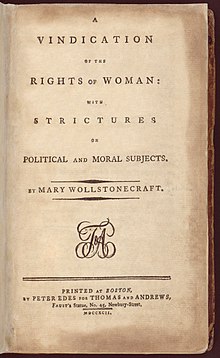
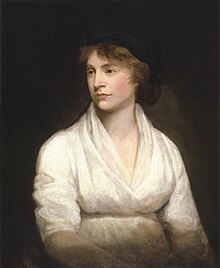

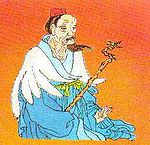








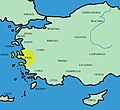



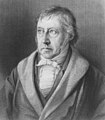


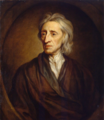






























![Image 9Adam Smith (baptised 16 June 1723 – died 17 July 1790 [OS: 5 June 1723 – 17 July 1790]) was a Scottish moral philosopher and a pioneer of political economics. One of the key figures of the Scottish Enlightenment, Smith is the author of The Theory of Moral Sentiments and An Inquiry into the Nature and Causes of the Wealth of Nations. The latter, usually abbreviated as The Wealth of Nations, is considered his magnum opus and the first modern work of economics. Smith is widely cited as the father of modern economics.](http://upload.wikimedia.org/wikipedia/commons/thumb/c/c0/Kirkcaldy_High_Street_Adam_Smith_Plaque.png/92px-Kirkcaldy_High_Street_Adam_Smith_Plaque.png)
































